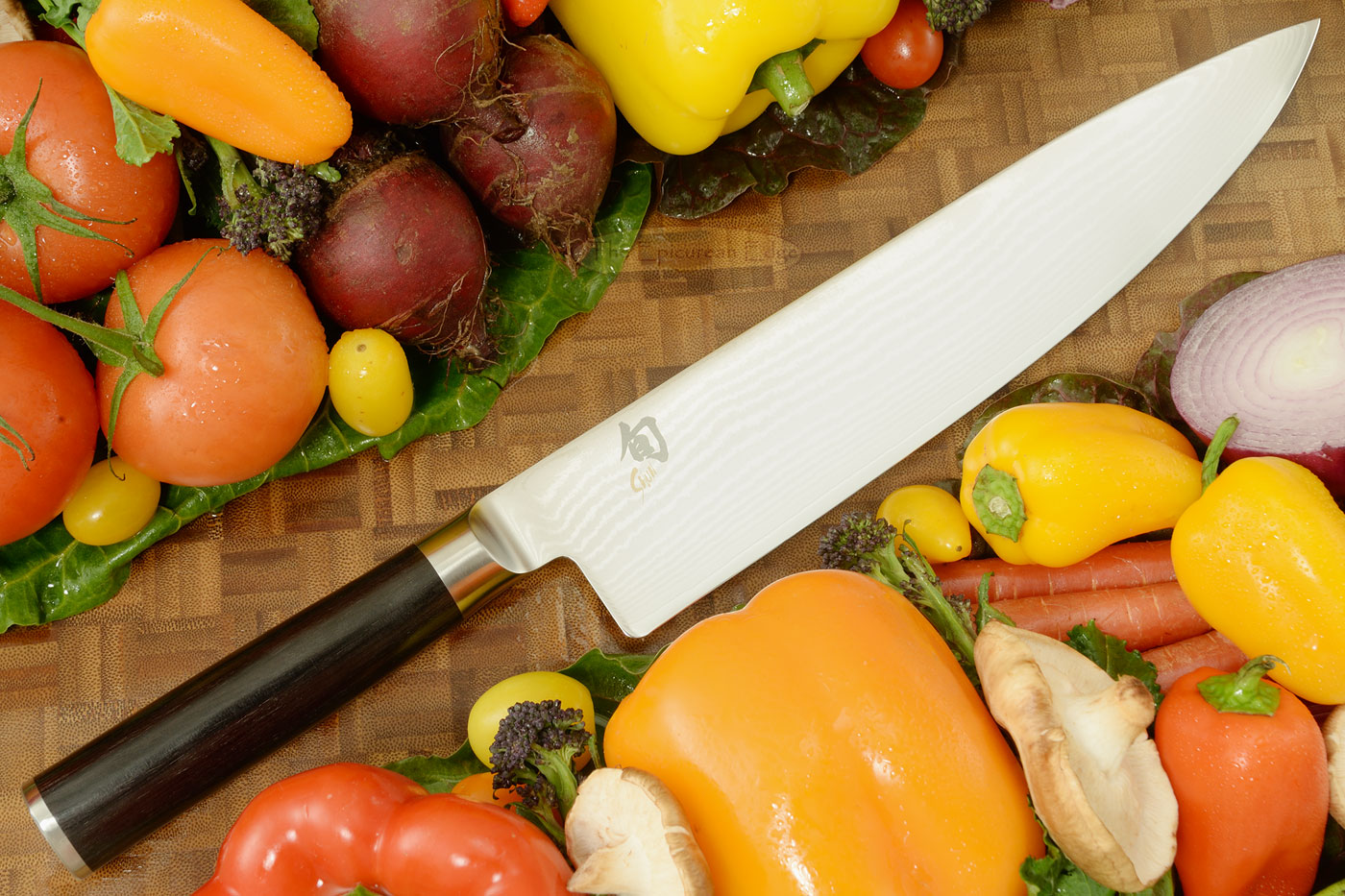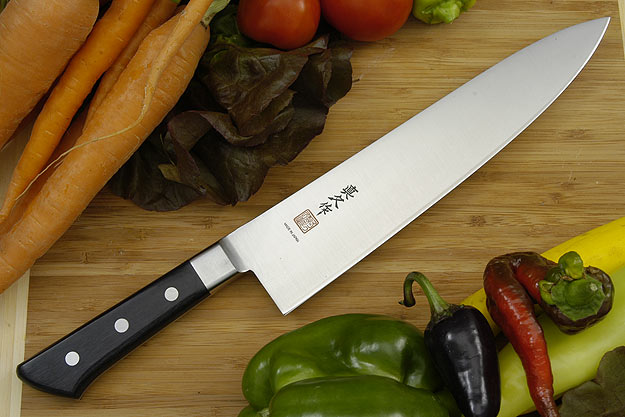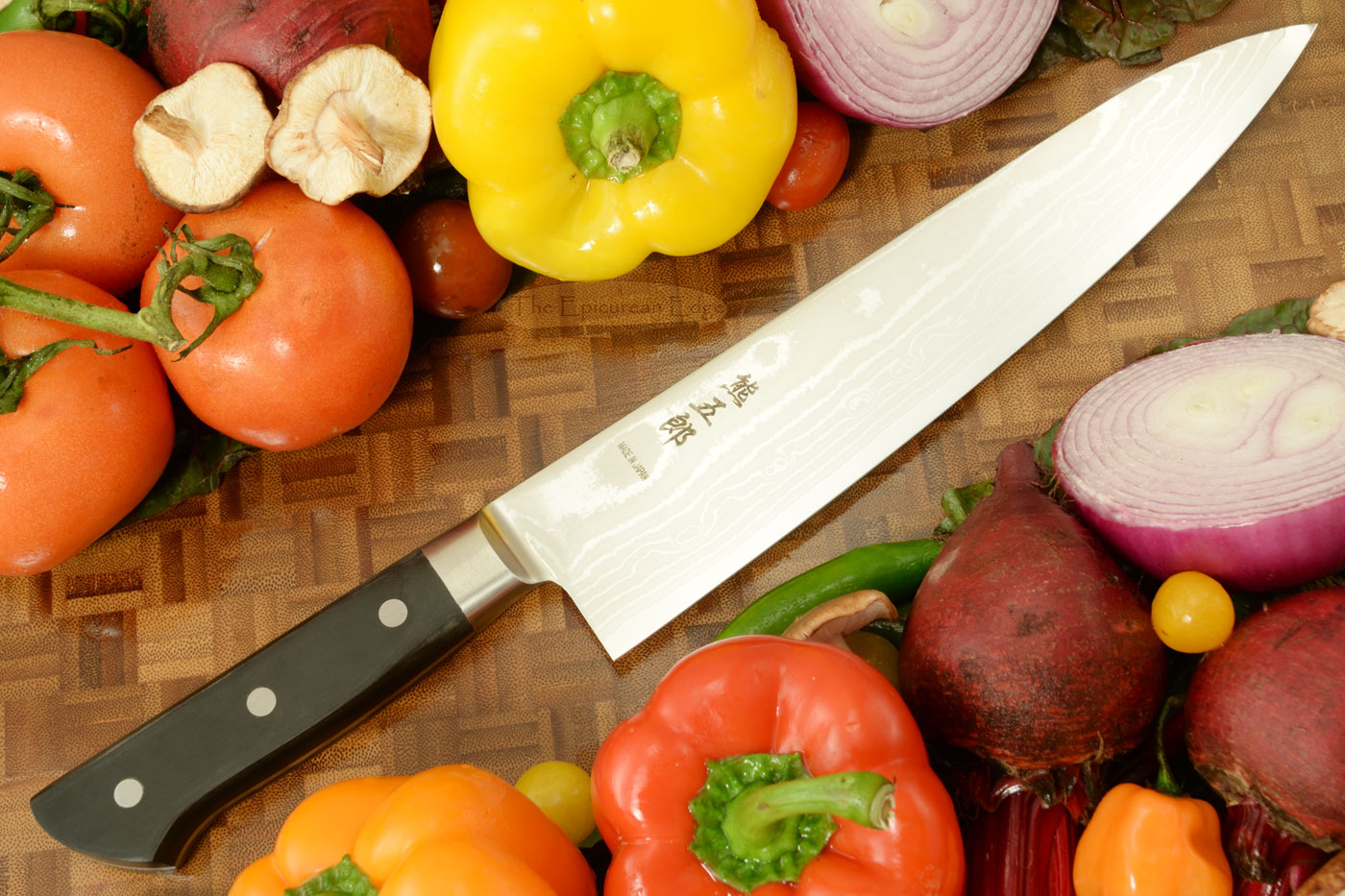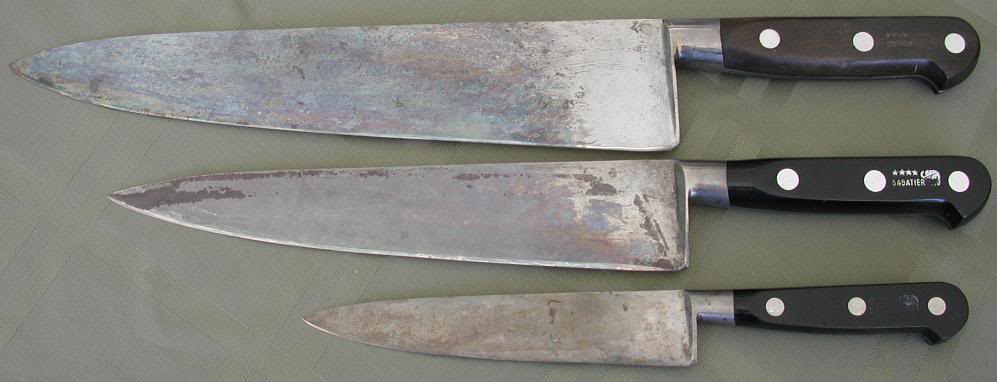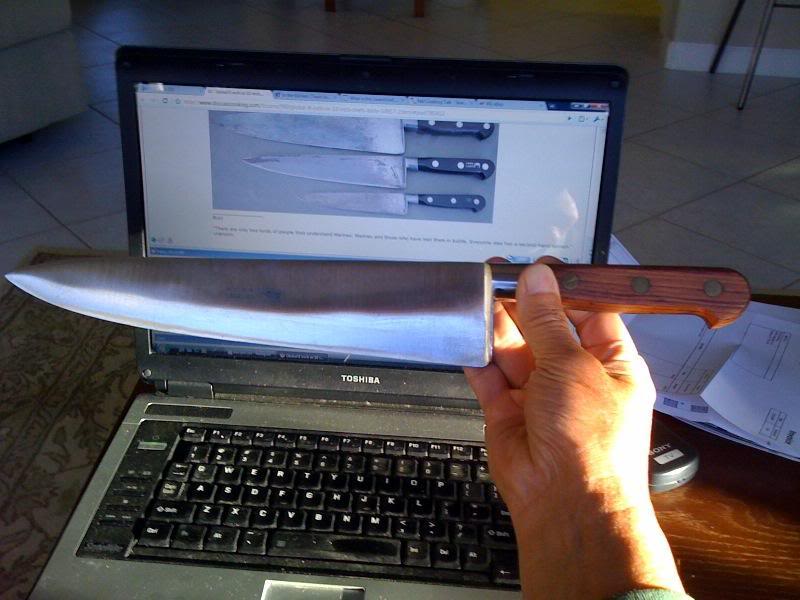Also, while the price of the Global knife does not necessarily bother me, I am curious as to what the added benefit of going with a Global chef's knife vs say a Forschner Fibrox for example which I understand is a good value for money.
Any help would be most appreciated.
I missed this part until I reread it. While price is no guarantee of quality, you generally will get a better knife in the higher price range (subject of course to the law of diminishing returns). More expensive knives will generally deliver a higher level of fit and finish as well as better steel and heat treating. More expensive European knives from Messermeister, Henckels and Wusthof will generally be forged compared to the stamped knives of the Fibrox line.
When you choose a Japanese knife you'll not only get generally better steel (harder at any rate, and often much more wear resistant, too) but also better geometry. A Hattori, Shun or Yoshikane will wear an edge bevelled at about 15-16 degrees per side vs the 22.5 or so that Germans generally have. Japanese knives generally are laminated; a very hard core is bonded to a softer steel outer cladding. This allows the cutting edge to be very hard while the cladding helps protect if from rust and improves flexibility and durability. The hagane (core) will usually be made from V-Gold 10, SKD, SG2 or some other proprietary equivalent. Normally the cutting edge of the knife is hardened to around 60-64 Rockwell C on a Japanese knife vs 55-58 for most European blades. This, combined with finer carbides, will allow the knife to be sharpened to a more acute angle and maintain the edge longer (note: this is a whopper of a simplification!).
That said, forged knives aren't always superior. Most japanese knives, even some very expensive ones, are stamped. I'd agree that the Forshner Fibrox knives are a great deal, fantastic for the money. I still keep a couple in my work roll.
I'm a big fan of Japanese knives, and they make up the bulk of my collection. But that's just a preference; there are tradeoffs. The hard the steels have some advantages, but in general terms they're also a bit more "brittle" than a softer German. If I need to split a lobster I usually grab my Wusthof, not my Hattori. Of course, whacking coconuts and splitting chicken bones is really a job for a cleaver (or axe!

) but a thicker, softer, and sturdier German will come thru the ordeal better than my Shuns. Lastly, sharpening Japanese knives is a bit more
complicated, or at least requires a different approach.

